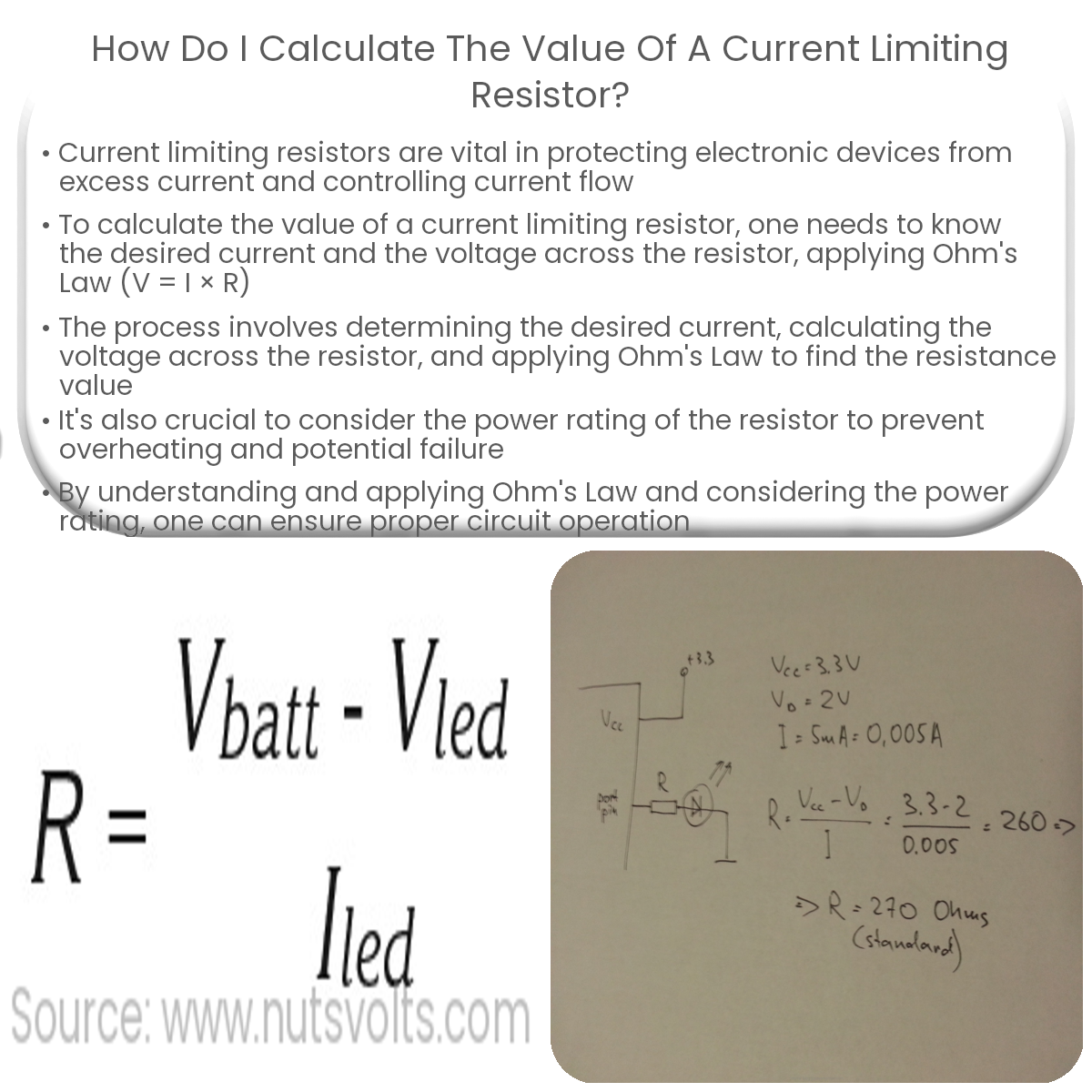To calculate a current limiting resistor, use Ohm’s Law (R=V/I) with the desired current and voltage across the resistor, and consider the power rating.
Calculating the Value of a Current Limiting Resistor
Current limiting resistors are essential components in many electronic circuits, protecting devices from excessive current and controlling the flow of current. In this article, we will explain how to calculate the value of a current limiting resistor for a given circuit.
Using Ohm’s Law
Ohm’s Law is the fundamental principle used to calculate the value of a current limiting resistor. It states that the voltage (V) across a resistor is equal to the current (I) flowing through it multiplied by the resistance (R):
V = I × R
To calculate the value of a current limiting resistor, you’ll need to know the desired current (I) and the voltage across the resistor (V).
Steps to Calculate a Current Limiting Resistor
- Determine the desired current: First, find out the current required for the component you want to protect, such as an LED or a transistor. This value is usually specified in the component’s datasheet.
- Calculate the voltage across the resistor: Subtract the voltage drop across the component from the supply voltage. This will give you the voltage across the current limiting resistor. For example, if you have a 5V supply and an LED with a 2V voltage drop, the voltage across the resistor is 5V – 2V = 3V.
- Apply Ohm’s Law: With the desired current (I) and voltage across the resistor (V), use Ohm’s Law to calculate the resistance value (R):
R = V / I
Using the example above, if the desired current is 20mA (0.02A), the required resistance would be:
R = 3V / 0.02A = 150 ohms
Consider the Power Rating
When selecting a current limiting resistor, it’s crucial to consider the power rating. The power rating indicates the maximum amount of heat the resistor can dissipate without being damaged. The power (P) dissipated by a resistor can be calculated using the formula:
P = V × I
Ensure the chosen resistor has a power rating greater than the calculated power to avoid overheating and potential failure.
Conclusion
Calculating the value of a current limiting resistor is essential for designing electronic circuits that protect components and control current flow. By understanding and applying Ohm’s Law, along with considering the power rating, you can select the appropriate resistor for your circuit and ensure its proper operation.


